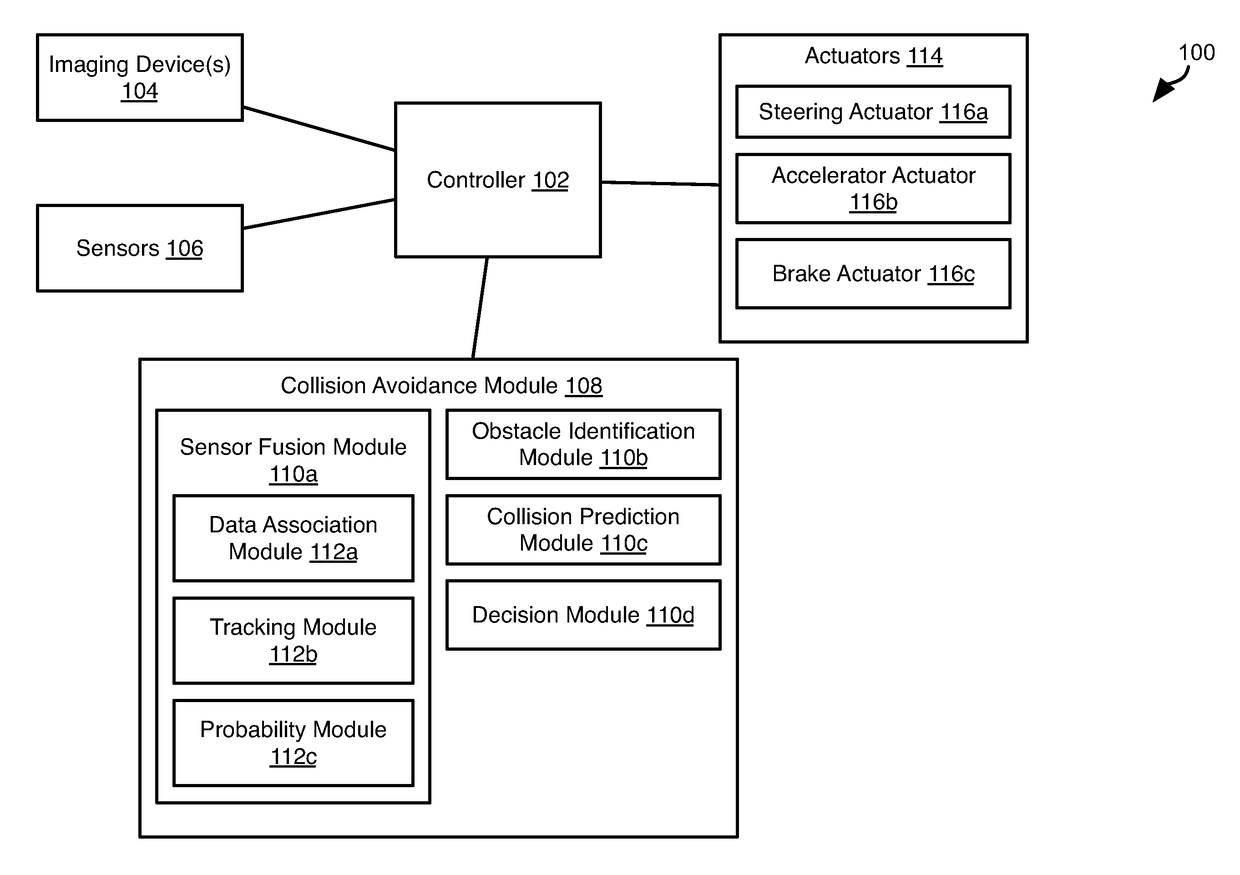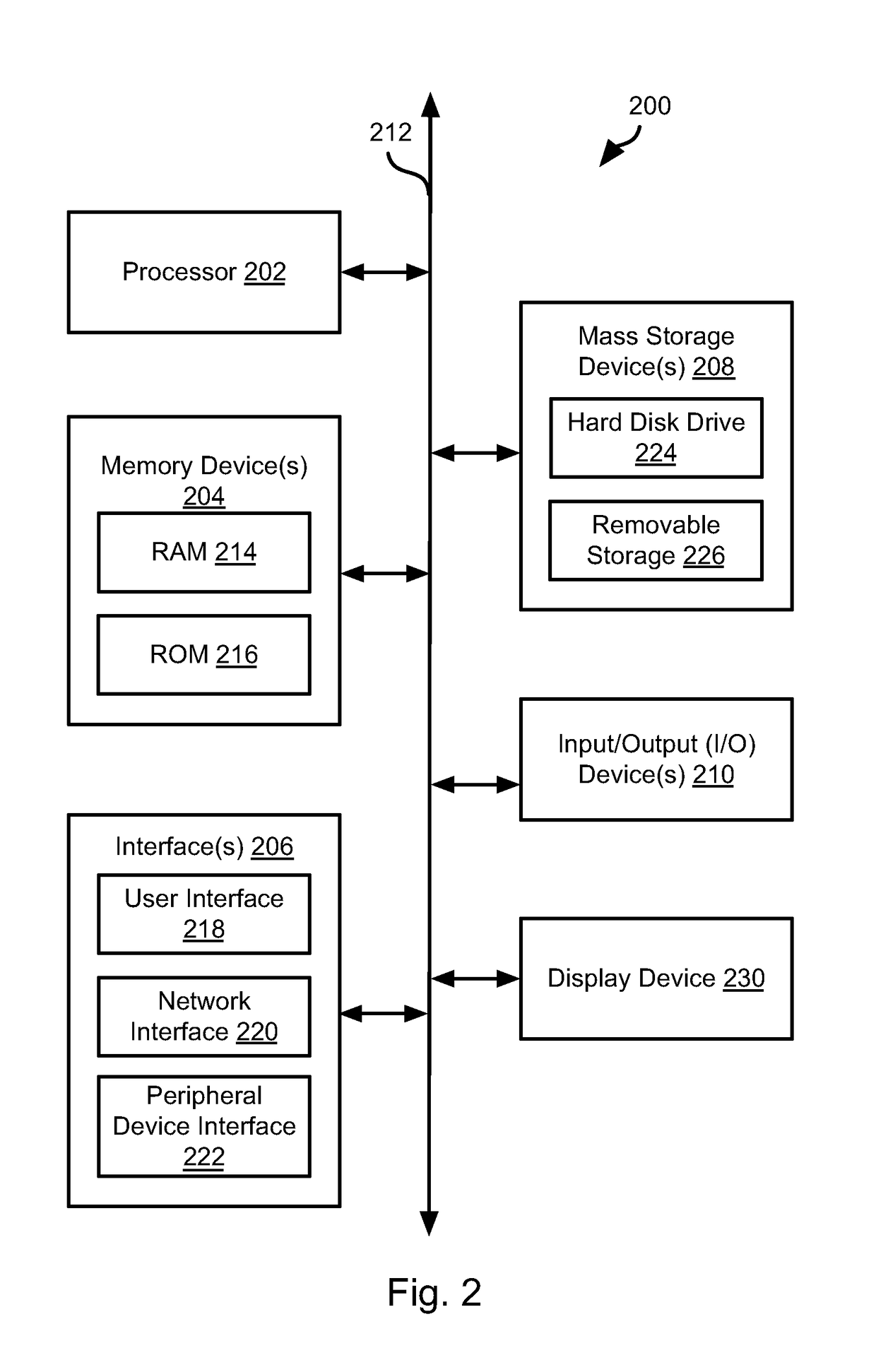Object tracking using sensor fusion within a probabilistic framework
a probabilistic framework and object tracking technology, applied in the direction of vehicle position/course/altitude control, process and machine control, instruments, etc., can solve the problems of sensor data, noisy, sparse, inaccurate, and unnecessary intervention of active safety features
- Summary
- Abstract
- Description
- Claims
- Application Information
AI Technical Summary
Benefits of technology
Problems solved by technology
Method used
Image
Examples
Embodiment Construction
[0012]Referring to FIG. 1, a system 100 may include a controller 102 housed within a vehicle. The vehicle may include any vehicle known in the art. The vehicle may have all of the structures and features of any vehicle known in the art including, wheels, a drive train coupled to the wheels, an engine coupled to the drive train, a steering system, a braking system, and other systems known in the art to be included in a vehicle.
[0013]As discussed in greater detail herein, the controller 102 may perform autonomous navigation and collision avoidance. The controller 102 may receive one or more image streams from one or more imaging devices 104. For example, one or more cameras may be mounted to the vehicle and output image streams received by the controller 102. The controller 102 may receive one or more data streams from one or more sensors 106. For example, the controller may be coupled to one or more other sensors 106 that are mounted to the vehicle. The sensors may include RADAR (rad...
PUM
 Login to View More
Login to View More Abstract
Description
Claims
Application Information
 Login to View More
Login to View More - R&D
- Intellectual Property
- Life Sciences
- Materials
- Tech Scout
- Unparalleled Data Quality
- Higher Quality Content
- 60% Fewer Hallucinations
Browse by: Latest US Patents, China's latest patents, Technical Efficacy Thesaurus, Application Domain, Technology Topic, Popular Technical Reports.
© 2025 PatSnap. All rights reserved.Legal|Privacy policy|Modern Slavery Act Transparency Statement|Sitemap|About US| Contact US: help@patsnap.com



